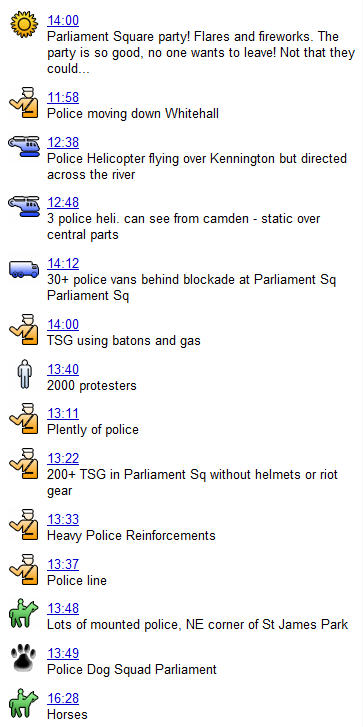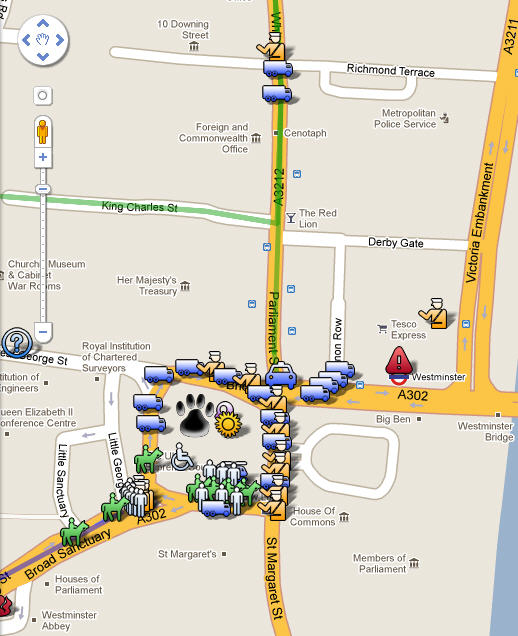We have seen how the Internet has changed the telephony business allowing voice and now video conversations to be transmitted as packets. This simple change made Internet voice and video calls free. In addition, we have seen how email has helped drive the US Post Office more quickly into the red.
E-commerce has made it possible to buy virtually anything at prices which are a fraction of what they would have been a decade and a half ago. The margins once afforded retailers for holding hard-to-find merchandise continues to fall and countless industries have been annihilated because their margins too are falling rapidly. Local florists and film processing companies come to mind as some of the earliest casualties but there are other retailers who are getting killed because their customers are flocking to the web. Certainly the bankruptcy of Circuit City’s retail stores had a lot to do with Internet competition.
A time-line of Twitter messages on a Google Maps protest mash-up recently used in UK protests
 The Internet is the ultimate lubricant and allows for immediate communications; immediate commerce and more recently, immediate dissent.
The Internet is the ultimate lubricant and allows for immediate communications; immediate commerce and more recently, immediate dissent.
So many regimes restrict the Internet – Iran, China and much of the Middle East come to mind. And they do this in-part because they fear dissent and understand their countries could face revolutions if they don’t clamp down on their populations.
Twitter was used during the most recent Iranian election to orchestrate protests and speak out against the government but officials quickly cracked down on this medium they seem to had forgotten to monitor and/or censor.
Most recently, protestors in London used Twitter and a Google Maps mash-up to show communications from protesters in precise locations. In this manner, protesters were able to see exactly where their fellow protestors were located as well as where ambulances and police were.
Using a simple hashtag #fees, protesters could have their communications instantly broadcast to others in near real-time.
Technology has already been lubricating protests and has made it far easier to gather others who share a particular point of view using the web and email. And this can be a very good thing – I am a huge proponent of human rights and believe peoples’ voices should be heard.
A map of protest and law enforcement activity in the recent UK student protest in response to tuition hikes

I am not however a fan of violent protests and I am concerned that a smaller group of people bent on violence will be able to protest much more effectively and cause more damage by being able to go after high-value mobile targets like cars belonging to a country’s leaders, a prince, etc.
Obviously, we must hope law enforcement is on top of all of these advancements and can moreover try to stay one step ahead of protestors who preach violence.
More:





